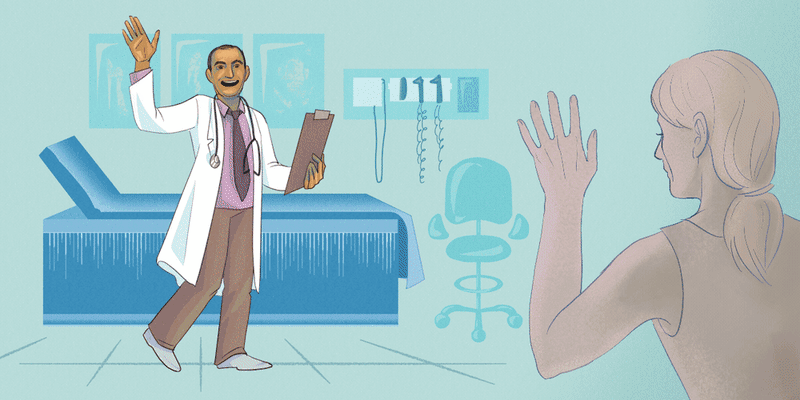The vast majority of clinicians (93%) believe that research publications should be free to access, according to a Doximity poll.
This widespread support follows an announcement from the U.S. Office of Science and Technology Policy (OSTP) that, effective December 31, 2025, all research publications and supporting data that are funded by taxpayers must be made immediately available to the public at no cost. The U.S. policy guidance — made in consultation with research publishers, institutions, and societies as well as the general public — will end current guidelines that allow publishing companies to set a one-year paywall embargo on taxpayer-funded research.
“All scientific and medical research should be freely available to all scientific and medical researchers and personnel,” said Daniel Dirnberger, MD, who serves as director of neonatology at Nemours Children’s Hospital. “Specifically, journals should not be able to charge physicians and scientists and educators for access to publications.”
Among the 3,405 clinicians who responded to the poll, 74% believe all research publications should be free to access and an additional 19% believe most should be free to access.
Clinician support for free access to all or most research publications is high across the various polled professions, including for 97% of medical students, 96% of NPs, 94% of PAs, 92% of physicians, and 89% of pharmacists. In addition, nearly all clinicians say most or all research should be freely available, regardless of their age, gender, or region of practice.
Furthermore, clinicians appear to back free access regardless of their individual research contribution, though those with the highest number of publications are slightly less inclined to favor free access. Among polled clinicians who have no publications, 93% are in favor of free access, compared with 93% of those with one to 10 publications, 94% with 11 to 20 publications, 91% with 21 to 100 publications, and 88% with more than 100 publications.
It follows that younger clinicians, who have had less time to conduct research and publish articles, are slightly more likely to favor free access: 96% of clinicians 29 and under, compared with 95% in their 30s; 92% in their 40s, 50s, and 60s; and 89% in their 70s and older.
The federal push for free research access has been ongoing for years, spurred in part by a 2013 directive for federal agencies to provide public access to their publications. The initiative has made available at least eight million scholarly publications, now read by more than three million people per day, according to the OSTP.
Broadly, the new policy could have a profound impact on the way scientific and medical research is distributed. The OSTP estimated that between 195,000 to 263,000 (7% to 9%) of the 2.9 million articles published worldwide in 2020 were federally funded.
Yet many details of the policy have not been fully disclosed, including how the effort might be backed, the extent of the data-sharing expectations, and what penalties researchers might face for noncompliance.
In addition, the department has emphasized that the policy is not intended to mandate a particular business model. Journals and publishing companies, for example, could still hold the final version of a paper behind a paywall, as long as researchers make a peer-reviewed, accepted version available in a public repository like PubMed or an agency-approved outlet.
For medical professionals, the policy could pave the way for wider and more timely visibility into the latest research. Greater access to medical research also may help promote ongoing developments in the field and more quickly shape the way clinicians practice — particularly in cases involving critical or novel public health issues.
“The new policy will make scientific results available earlier and without costs to the lay public and also to scientists and students at less well-funded universities that may not have subscriptions to certain medical journals,” said Mary McDermott, MD, the Jeremiah Stamler Professor of Medicine at Northwestern and a deputy editor at JAMA. “Sometimes, however, the ‘accepted version’ (before publication) is not the most accurate version … and the public might have access to a version of the manuscript with a conclusion that does not precisely reflect the study’s findings.”
Analysts are uncertain how the change will ultimately affect the finances of journals, publishers, and researchers. Opponents of the policy have suggested that providing free access to readers could shift the burden of cost to authors, who often pay a fee to publish their work. An increase in submission and processing fees could, in turn, dissuade researchers from publishing in certain journals or perpetuate inequity in who can afford to publish.
A decrease in costs could also lead to diminishing incentive for some clinicians to take up editorial board positions. Without sponsorship to replace the potential loss of capital, the quality of a journal’s peer review, editing, or publication process could suffer as well.
“The incentive to pay for newly published science is greatly reduced if the science will be available anyway,” Dr. McDermott said.
While many of the downstream effects of the new policy remain unclear, the vast majority of clinicians still seem to agree with the premise that research publications should be made freely available.
“I don't think anyone denies that there are a few costs to running a journal,” said Carrie Johnson, MD, a resident physician. “But nearly everything about a publication came from labor free to the publisher. We want fair costs, not exploitative ones.”
“There are no real disadvantages [to the policy] except to the publishers who make money on keeping things closed access,” added Atul Butte, MD, PhD, the Priscilla Chan and Mark Zuckerberg Distinguished Professor at UCSF. Dr. Butte further emphasized the significance of requiring that the data underlying research publications be freely available, and has written extensively on the topic.
To that end, several prominent journals, including JAMA and Science, have already shifted their publishing guidelines, permitting authors to submit a fully peer-reviewed version of their manuscript into a public repository of their choosing immediately upon the article’s publication. These initiatives have the potential to reshape the way research is shared throughout the medical community.
“The guiding principle for all of our decisions turns on what is best for science and for the application of science to medicine and public health,” wrote JAMA Editor-in-Chief Kirsten Bibbins-Domino, MD, PhD and colleagues in an editorial. “Ultimately, as stakeholders, we must be willing to pay for the things we value in building and supporting a robust scientific ecosystem now and in the future.”
The poll respondents include 2,287 physicians, 429 NPs, 279 pharmacists, 191 PAs, and 187 medical students, among other clinicians.
Image by Ksenia Zvezdina / Getty Images






